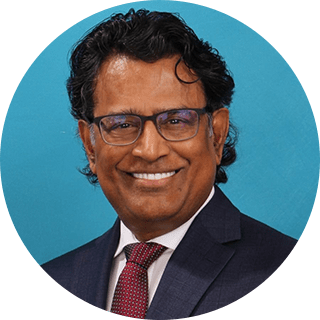Temporomandibular Dysfunction (TMD) affects the temporomandibular joints (TMJ), which connect the lower jaw to the skull. It also affects jaw muscles, neck muscles and muscles related to breathing and ear function. Early detection and treatment of TMD are crucial for preventing long-term discomfort and complications. This article will explore the early signs of TMD and the effective treatment approaches offered by the Raman Center for TMJ & Sleep.
Understanding TMD
Temporomandibular Dysfunction (TMD) encompasses a range of conditions that affect the TMJ, causing pain and dysfunction in the jaw joint and surrounding muscles. The TMJ plays a vital role in daily activities such as talking, chewing, and yawning. When this joint is compromised, it can lead to significant discomfort and impaired function. Recognizing the early signs of TMD is essential for timely intervention and relief.
Early Signs and Symptoms of TMD
Recognizing the early signs of TMD is essential for timely intervention and relief. Here are some common symptoms:
- Intermittent, painless popping and clicking: Painless jaw clicking or popping is often an early sign of TMD. Without treatment, this minor issue can progress into serious jaw pain and dysfunction.
- Jaw Pain or Tenderness: Persistent pain or tenderness around the jaw, particularly when chewing or speaking. This discomfort can often extend to the face and neck, making it difficult to perform everyday tasks.
- Headaches and Migraines: Frequent headaches, migraines, can be linked to TMD. These headaches are typically caused by the strain and tension in the jaw and neck muscles, which can radiate pain to the temples and forehead. In fact, headaches are the most common symptom of poor jaw alignment – TMD.
- Ear Pain or Ringing (Tinnitus): Unexplained ear pain or a ringing sensation are common symptoms of TMD. The proximity of the TMJ to the ear canal means that inflammation and tension in the jaw can directly impact the ears, leading to discomfort and auditory issues.The tiny muscles that control eardrum tightness and Eustachian Tube opening are controlled by branches of the jaw nerve.
- Facial Pain or Discomfort: Pain or discomfort in the face, particularly around the jaw, cheeks, and temples, is a common sign of TMD. This pain can be constant or intermittent and may worsen with jaw movement.
- Neck and Shoulder Pain: TMD can cause pain that radiates to the neck and shoulders. This is due to the interconnected nature of the muscles and nerves in the jaw, neck, and upper back, which can all be affected by TMJ dysfunction.
- Difficulty Chewing or Opening the Mouth Wide: Limited jaw movement or discomfort while chewing or opening the mouth wide can signal TMD. This restriction in movement can be due to muscle tension, joint inflammation, or structural issues within the TMJ.
Causes and Risk Factors of TMD
Understanding what contributes to TMD can help with both prevention and treatment:
- Jaw Misalignment: When the upper and lower jaws don’t fit together properly, uneven pressure can strain the TMJ and lead to pain.
- Muscle Tension and Stress: Clenching or grinding from stress can overwork jaw muscles, causing inflammation and discomfort.
- Joint Dysfunction or Arthritis: Degenerative or inflammatory conditions like arthritis can damage the TMJ over time.
- Jaw or Head Trauma: Accidents or injuries can displace the joint or harm surrounding muscles and ligaments.
- Poor Posture: Slouching or forward head posture can strain the jaw and neck muscles, increasing TMJ tension.
- Genetic Factors: Some people inherit traits that make them more prone to jaw misalignment or joint dysfunction.
- Related Health Conditions: Disorders like sleep apnea or chronic pain syndromes can worsen jaw muscle fatigue and discomfort.
Diagnosing TMD
Diagnosing TMD involves a comprehensive evaluation to identify the underlying causes and determine the best treatment plan. Our diagnostic process includes:
- Initial Consultation and Examination: During the initial visit, a thorough clinical examination of the jaw, face, neck, and head is conducted. Dr. Prabu Raman will review the patient’s medical history and discuss symptoms to understand the extent of the impact of symptoms as well as prior treatment history.
- Advanced Diagnostic Tools and Technologies: We employ cutting-edge technologies to diagnose TMD accurately:
- EMG (Electromyography): Measures the electrical activity of the jaw, neck and tongue muscles to detect and quantify muscle function.
- ULF-TENS (Ultra Low Frequency Transcutaneous Electrical Nerve Stimulation): Helps relax the jaw and neck muscles in helping to diagnose the optimal jaw and neck alignment.
- K-7 Jaw computer Evaluation System: Assesses the jaw joint and muscle function using computerized technology.
- OccluSense: Measures bite pressure and distribution to identify imbalances.
- Carestream Scanner: Provides detailed 3D images of the jaw and teeth for precise diagnosis.
- Cone Beam CT Scanner: This scanner produces high-resolution 3D images of the jaw, teeth, and surrounding structures for a comprehensive evaluation.
By utilizing these advanced diagnostic tools, the Raman Center ensures a precise and personalized diagnosis for each patient, leading to effective treatment outcomes.
Practical Treatment Approaches at Raman Center
We offer a variety of non-invasive treatment approaches to address TMD:
- Physiologic Neuromuscular Dentistry: Aligns the jaw and ensures optimal TMJ function through customized therapies.
- Non-Invasive Therapies: These include physical therapy, posture training, and TENS therapy to relieve symptoms and improve jaw function.
- Reversible 90-Day Phase 1 Treatment: Focuses on symptom relief and jaw alignment using Physiologic Neuromuscular Fixed orthotic plus adjunctive physical therapy therapy to address posture problems and Orafacial Myofunctional therapy to address tongue and oral muscle function.
- Long-Term Phase 2 Stabilization Without Surgery: Several options are offered to maintain or further improve the corrected jaw / neck position. Neuromuscular Functional Orthodontics / Orthopedics to correct arch shapes and move natural teeth into optimal position. Full Mouth Aesthetic Reconstruction after improving arch forms. Custom-made removable aesthetic orthotic replacing refined phase 1 fixed orthotic .
These comprehensive and patient-centered treatment approaches effectively relieve TMD symptoms and enhance overall jaw function, improving patients’ quality of life.
Self-Care Tips for Managing TMD
Managing and preventing TMD can be significantly improved with self-care practices and preventive measures. Here are some tips to help alleviate symptoms and reduce the risk of developing TMD:
- Stress Management: Techniques such as deep breathing, meditation, and yoga can help reduce stress and prevent jaw clenching.
- Proper Posture: Maintaining good posture, especially when working at a computer, can reduce TMJ strain.
- Jaw Exercises: Regular, gentle exercises can strengthen jaw muscles and improve mobility.
- Avoid Hard Foods: Refrain from chewing hard foods, ice, and gum to minimize jaw stress.
- Limit Jaw Movements: Avoid extreme jaw movements such as wide yawning and biting into large sandwiches.
- Regular Dental Check-Ups: Routine dental visits can detect early signs of TMD.
Take the First Step Toward Relief
Addressing the early signs of TMD is crucial for preventing long-term complications and improving overall health. The Raman Center for TMJ & Sleep, located in Kansas City, Missouri, offers advanced diagnostic tools and personalized treatment plans to manage and relieve TMD symptoms effectively. By recognizing the symptoms, understanding the causes, and seeking professional help, you can take proactive steps toward a pain-free and healthier life.
If you are experiencing any symptoms of TMD, don’t hesitate to contact our team. We are dedicated to providing comprehensive care and ensuring your journey to recovery is smooth and successful. For more information, please call us at (816) 436-4422. Your path to relief and improved quality of life starts here.





